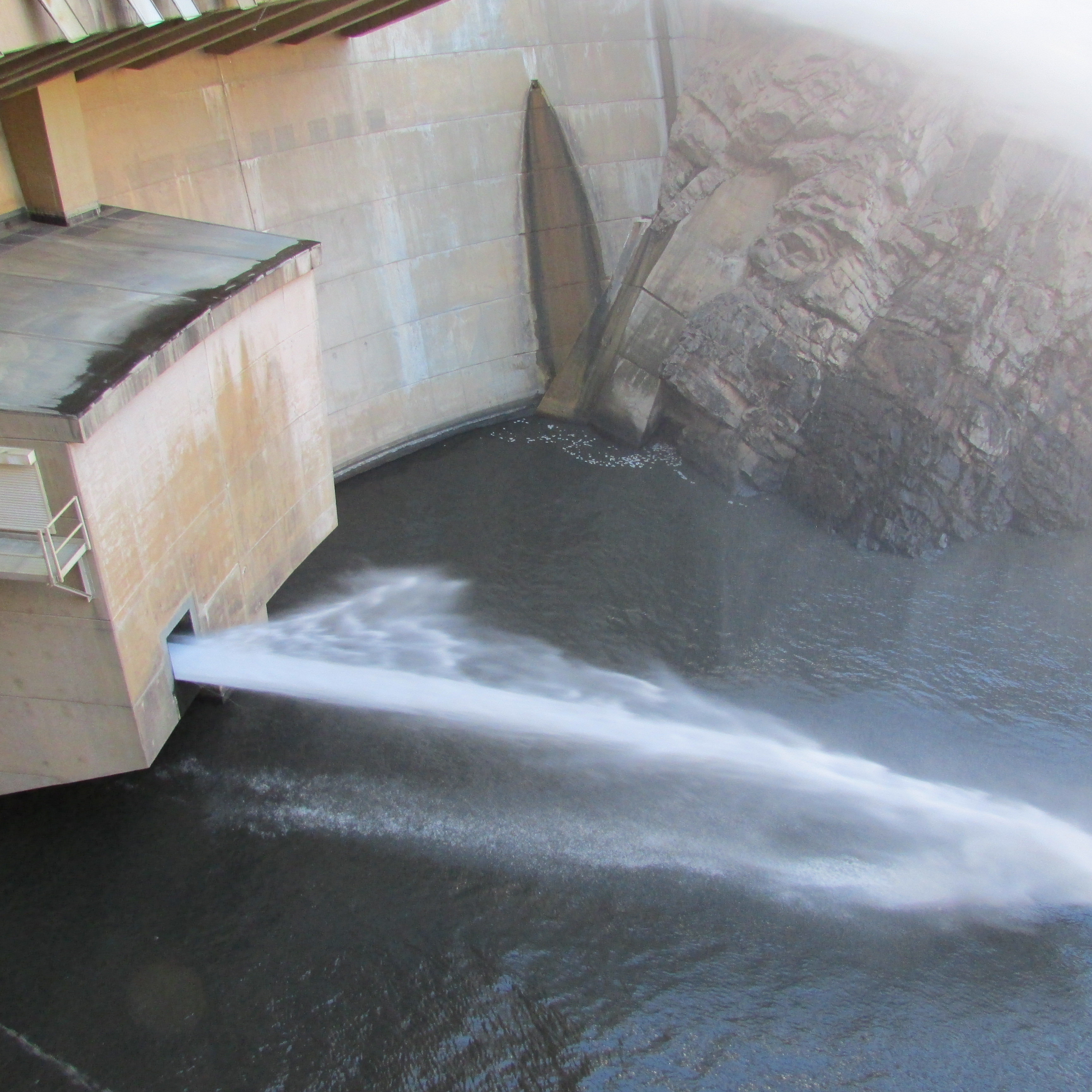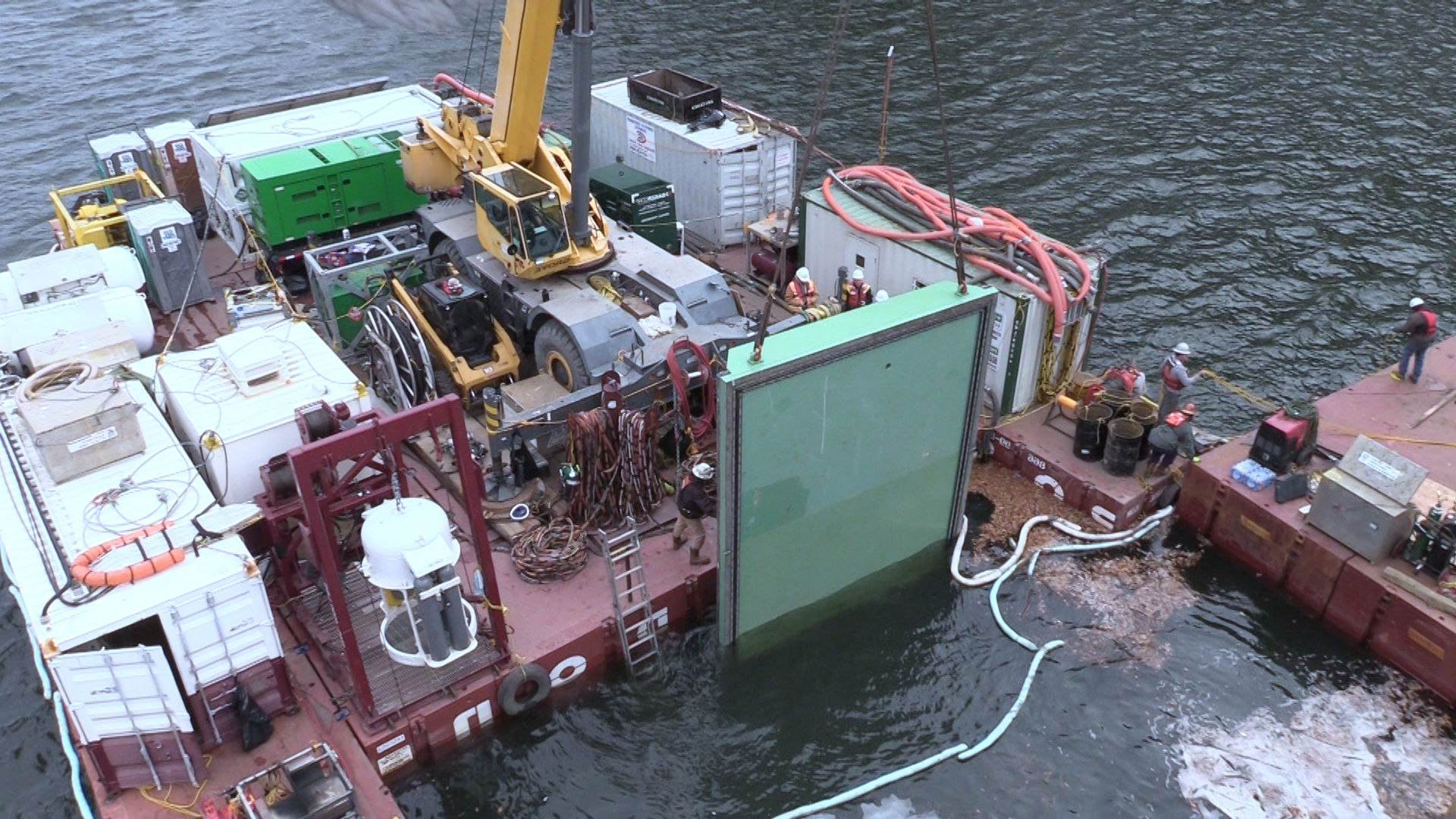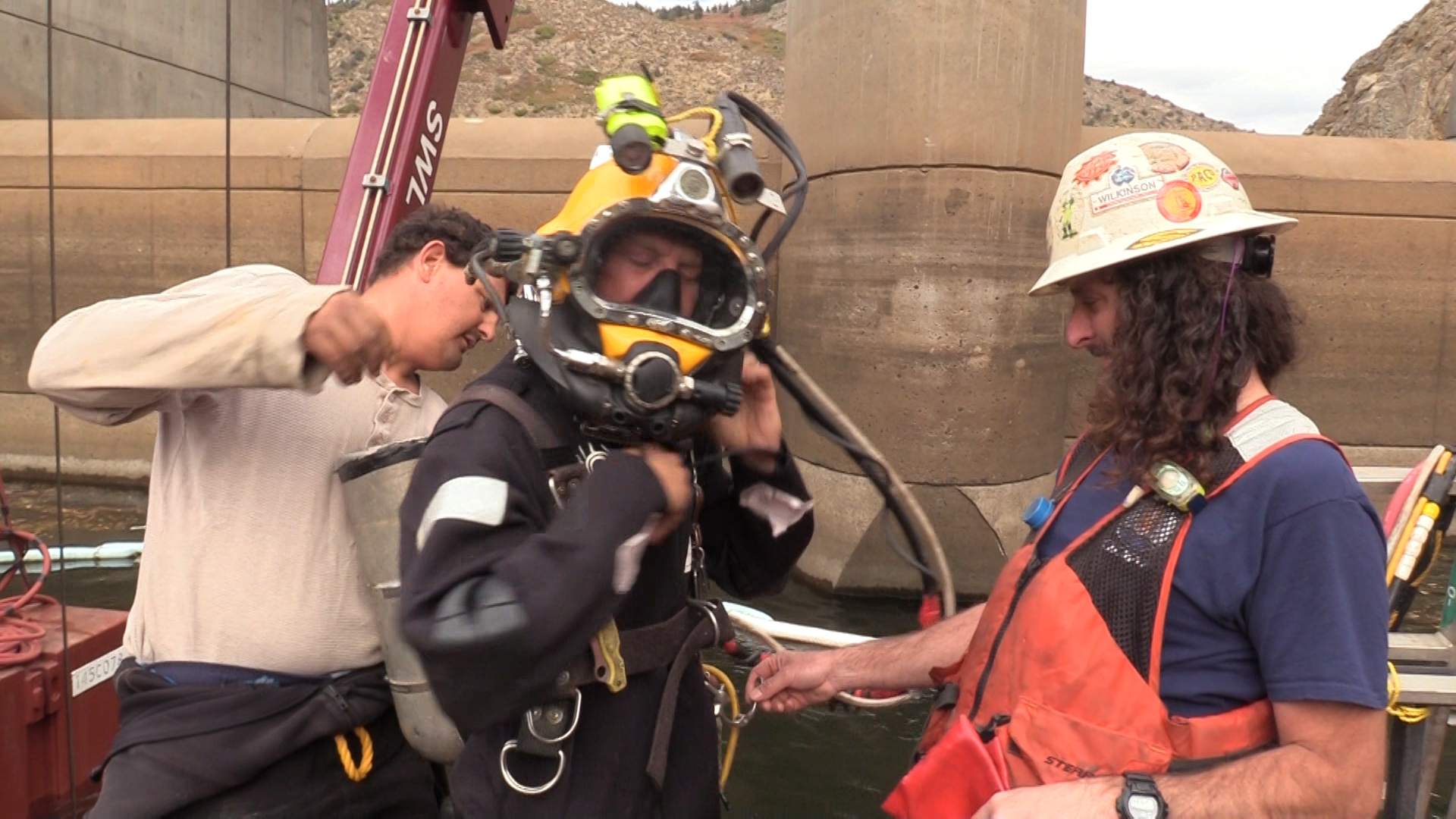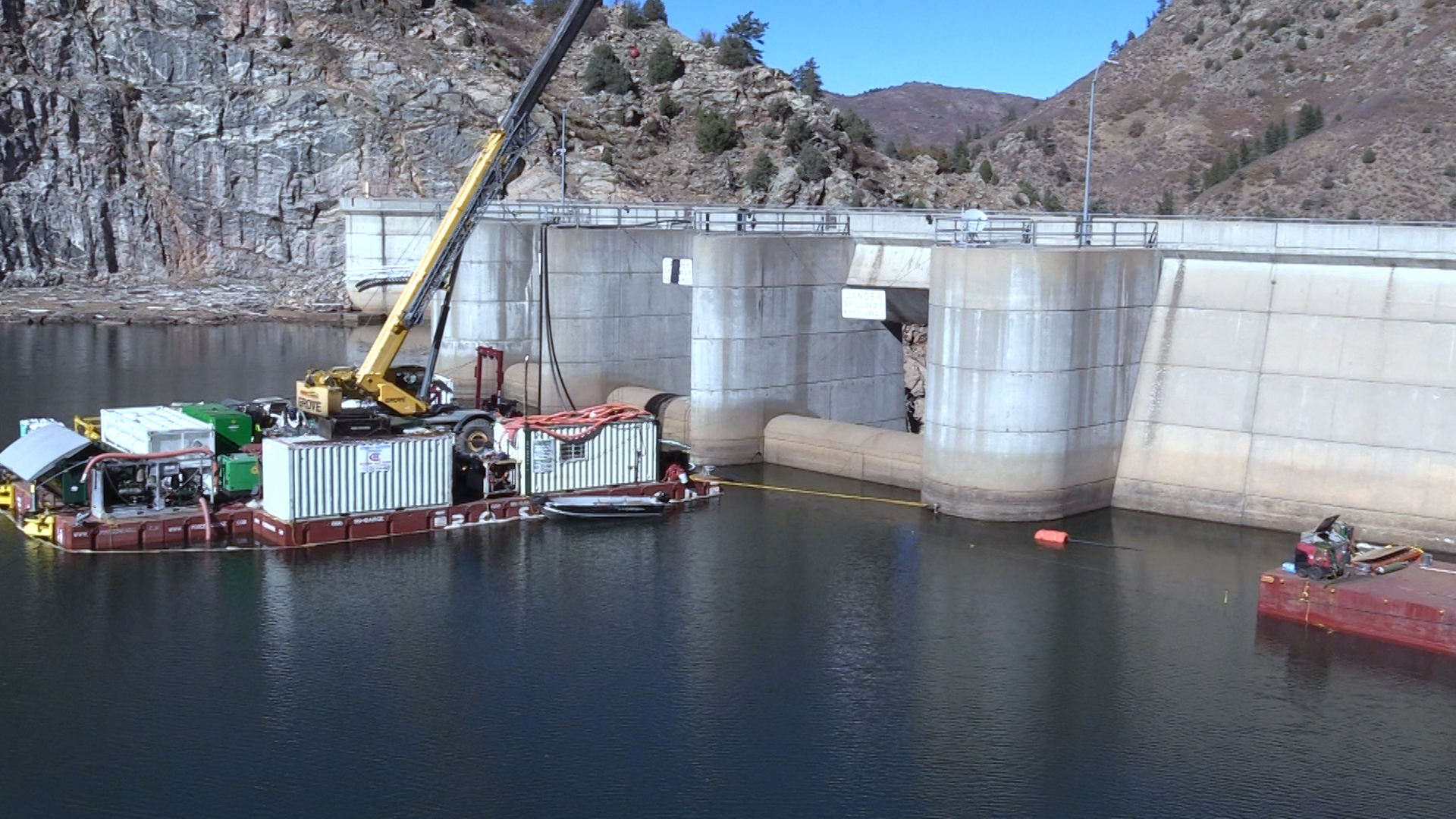
$4 million repair project brings elite team to reservoir
When your car breaks down, you take it to a mechanic. If you have a leaky sink, you hire a plumber. But how do you fix a problem on a concrete dam, 200 feet below the surface of a mountain reservoir?
You call in a team of elite underwater construction divers.
When the emergency reservoir drainage system at Strontia Springs Dam needed repairs, Denver Water did just that.
The drainage system, or ERDS, is a 50-foot long tunnel that is critical to dam safety. It allows operators to rapidly drain the reservoir and take pressure off the dam in the event of a structural problem, or to perform maintenance at the bottom of the dam.
The $4 million project began in September 2016, and is the second largest maintenance project at Strontia since the dam opened in 1983 ranking behind a sediment dredging operation in 2011.
The drainage system is a 50-foot long tunnel that runs water through the bottom of the dam. In 2015, a gate that opens and closes the tunnel broke from its lifting mechanism, leaving no way to let water out in an emergency.
“Fixing problems 200 feet underwater is never easy,” said Dan Batt, Denver Water construction project manager. “The repair work is complicated, dangerous, and things don’t always go as planned.”
A major phase of the project required closing off and draining the tunnel so workers could access the broken gate.
To do that, divers had to lower a custom-made steel bulkhead — 43,000 pounds, 18 feet high and 16 feet wide — onto the reservoir side of the dam and slide it down a narrow track to cover up the tunnel.
“It’s definitely a challenge,” Batt said. “It’s dark down there and the visibility is poor so the divers have to use their hands and guide the bulkhead into the track.”
The construction workers wear deep-sea diving suits with warm water pumped in to protect them from the cold temperatures. Their only light comes from a small headlamp on their diving helmets.
“It’s exciting and it gets your adrenaline flowing,” said diver Nathan Pierce from Ballard Marine Construction. “You get a little nervous at first, but then once you start working it’s game on and you just try to knock it out.”
The divers can only stay underwater for about 40 minutes due to the risks of high pressure at 200 feet below the surface.
“We always have a stand-by diver suited up and ready to go on the barge in case we run into any problems,” Pierce said.
The bulkhead didn’t fit at first and the crew had to make a number of modifications to get it into position.
“Making adjustments along the way is part of the challenge of this project,” said Heath Stuerke, Strontia Springs Dam manager. “No one’s seen this side of the dam in more than 30 years.”
Once the bulkhead was securely in place, a second team of construction workers entered the tunnel and removed the broken gate.
They also upgraded the drainage system’s backup gate and lifting mechanism, and repaired the tunnel’s deteriorating steel lining.
The system is expected to be back in operation by late January. Along with its emergency functions, the ERDS helps flush sediment that can build up against the dam and channels water to Strontia dam’s hydroelectric power plant.
“The work these guys did is vital to the safe operation of this dam,” Stuerke said. “It’s dangerous work, and hopefully we won’t have to do it again for many years to come.”




